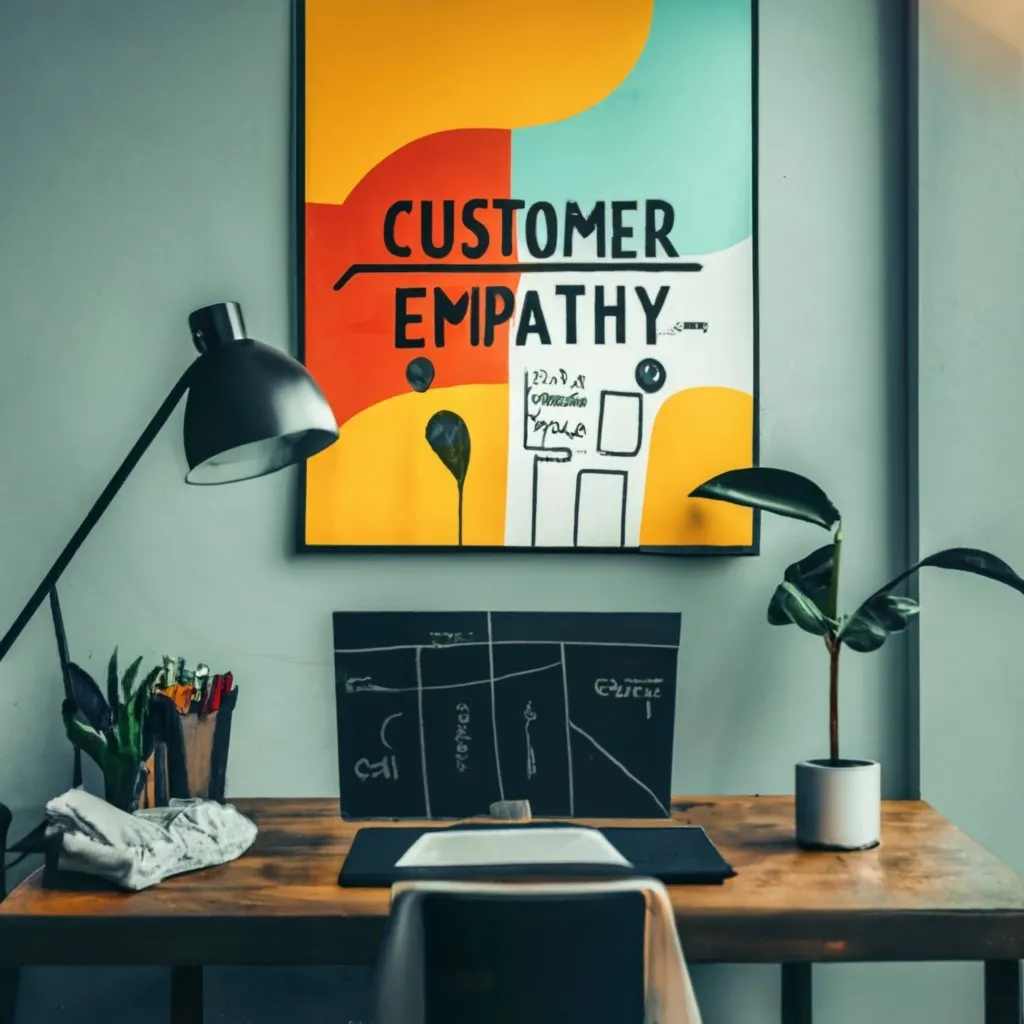How to use a customer persona and customer empathy map to innovate and make better decisions in your business or start-up.
Tips and Examples for using customer personas and customer empathy maps. Two powerful tools start-ups and businesses can use to make better decisions and innovate.
Customer persona
A customer persona is a fictional representation of your ideal customer. It is based on real data and research about your target audience, and it helps you to understand their needs, wants, goals, and pain points.
Example:
A start-up business selling organic baby food may create a customer persona that looks like:
- Name: Sarah
- Age: 35
- Occupation: Stay-at-home mom
- Income: $100,000+
- Education: College degree
- Values: Health, family, sustainability
Sarah is a busy mom who wants to feed her baby the healthiest food possible. She is concerned about the quality of ingredients in processed baby food, and she prefers to buy organic products. She is also looking for convenient and affordable baby food options.

Customer Empathy Map
A customer empathy map is a tool that helps you to understand your customer's perspective. It is a visual representation of what your customer is thinking, feeling, saying, and doing in a specific context.
Example:
The start-up business that sells organic baby food could create a customer empathy map for Sarah, their ideal customer. The map would look like this:
- Says: "I want to feed my baby the healthiest food possible." "I'm worried about the quality of ingredients in processed baby food." "I prefer to buy organic products." "I'm looking for convenient and affordable baby food options."
- Thinks: "What if my baby doesn't get the nutrients they need?" "I don't want to feed my baby processed food." "Organic food is more expensive, but it's worth it for my baby's health." "I don't have time to make my own baby food."
- Feels: "Overwhelmed." "Concerned." "Guilty." "Frustrated."
- Does: "Researches baby food options online." "Reads food labels." "Talks to other moms about baby food." "Shops at natural food stores."
How to use customer personas and customer empathy maps to innovate and make better decisions?
Start-up businesses can use customer personas and customer empathy maps to make better decisions in all areas of their business, including:
- Product development: Customer personas and customer empathy maps can help businesses to understand what products and features their customers want and need. For example, the start-up business that sells organic baby food could use their customer persona and empathy map to develop a new line of organic baby food pouches that are convenient and affordable for busy moms.
- Marketing: Customer personas and customer empathy maps can help businesses to create targeted marketing campaigns that resonate with their customers. For example, the start-up business that sells organic baby food could use their customer persona and empathy map to create a marketing campaign that focuses on the health benefits of organic food and the convenience of their baby food pouches.
- Customer service: Customer personas and customer empathy maps can help businesses to improve their customer service by helping them to understand what their customers expect and how they want to be treated. For example, the start-up business that sells organic baby food could use their customer persona and empathy map to develop a customer service policy that is responsive and helpful to busy moms.
Innovation
Customer personas and customer empathy maps can also help start-up businesses to innovate by helping them to identify new opportunities to meet the needs of their customers.
For example, the start-up business that sells organic baby food could use their customer persona and empathy map to identify new markets for their products, such as working moms or moms with food allergies. They could also use their customer persona and empathy map to identify new ways to sell their products, such as through a subscription service or a direct-to-consumer platform.
Wrapping Up
By understanding your customers' needs, wants, goals, and pain points, you and other start-ups can develop products, marketing campaigns, and customer service policies that resonate with your target audience. The information can also help you identify new opportunities to meet the needs of their customers and grow your business.
- Use customer personas and customer empathy maps to inform all of your business decisions, from product development to marketing to customer service.
- Share customer personas and customer empathy maps with your entire team so that everyone has a deep understanding of your customers.
- Use customer personas and customer empathy maps to test new ideas and get feedback from your customers before launching new products or services.
- Be sure to update your customer personas and customer empathy maps regularly as your business grows and your customers' needs change.
More examples of how start-up businesses can use customer personas and customer empathy maps to make better decisions and innovate:
Example 1:
A start-up business that develops a new social media app could use customer personas and customer empathy maps to understand what features their users want and need. For example, they could learn that their users are frustrated with the lack of privacy on existing social media platforms. They could then use this information to develop new features that give their users more control over their privacy.
Example 2:
A start-up business that sells a new type of sustainable clothing could use customer personas and customer empathy maps to understand what motivates their customers to buy sustainable products. For example, they could learn that their customers are concerned about the environmental impact of the fashion industry. They could then use this information to create a marketing campaign that highlights the sustainability of their products and their commitment to protecting the environment.
Example 3:
A start-up business that provides a new service for pet owners could use customer personas and customer empathy maps to understand what challenges their customers face. For example, they could learn that their customers struggle to find reliable dog walkers or pet sitters. They could then use this information to develop a service that makes it easy for pet owners to find and book qualified pet care professionals.

